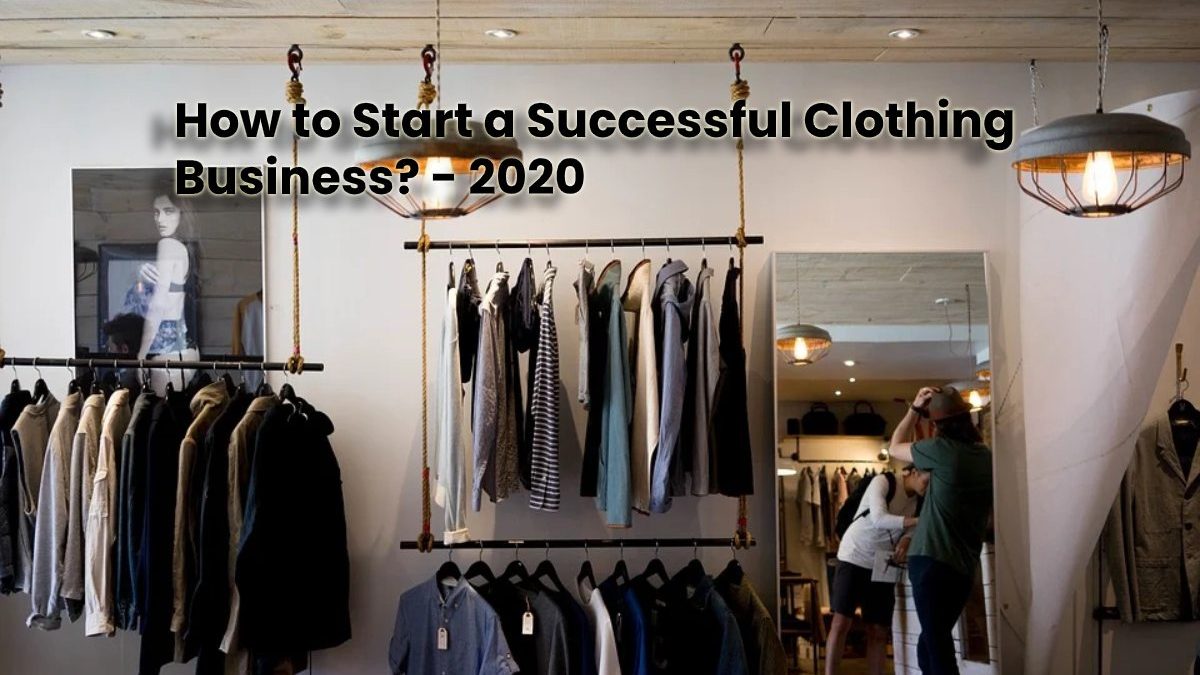Starting a clothing business is not an impossible mission. All you need is dedication, the right direction, and practical advice on starting a clothing business. In this article, we Informationntechnology are going to talk about how to start a successful clothing business, why to start a clothing business? and types of clothing businesses
Table of Contents
Why Start a Clothing Business?
People will always need clothes. Not only for the obvious reasons, but also for the way clothes make them feel, beautiful, attractive, or professional. Clothing is more than just fabric.
Different seasons demand different types of clothing, so there is a constant demand on the market. Furthermore, fashion dictates new trends every year.
That is not all; a clothing business can be very creative and rewarding. If you have a lot of ideas and something unique to present, this is the right profession for you, and it’s time to know, Types of clothing business, and how to start a clothing business?.
Types of Clothing Business

Ahead of learning how to start a clothing business, it is important to explore all options. There are several directions you can take:
Retailer
You can open your own store and sell clothes made by other people or companies. This is a direction that does not require large investments, such as the large expense of buying different equipment. Today, you can open an online store, which would lower your initial costs.
Print on Demand
This is one of the easiest and affordable options to start a small clothing business. Print on demand involves printing your designs on blank clothing only when the customer purchases the part. There are no installation costs, and there are many clothing options: you can print on T-shirts, socks, dresses, etc. Yellow Printed Suit Set
Custom T-Shirt Or Printing T-Shirts
For example, try pairing a fitted custom t-shirt or crop top with wide-leg jeans or a puff shoulder top with straight-leg pants.
Custom Shirts have come in trend now for all the women out there who want to look unique with their dressing.
A Private Line of Designer Clothing
This option is similar to print on demand but allows you to have higher margins and more customization possibilities. A private label clothing line allows you to create your own brand without having to create each piece from scratch. This involves buying blank clothing in bulk and adding your personal touch with prints, labels, etc.
Clothing Line
This is one of the most complex and time-consuming options, plus it also includes high startup costs. Having your own clothing line means you are in charge of everything: designing, creating patterns, Cotton Printed Suit Set choosing fabrics, and producing the entire clothing line from scratch. Naturally, you can constantly find reliable partners who can help you.
How to Start a Clothing Business?
Once you choose the type of store you want, it’s time to learn how to start a clothing business.
1. Define your Niche
To begin, identify what your target audience will be and determine who are the people who will wear your clothes. Think about the group you would be passionate about selling clothes or a demographic whose needs have not yet been met. The extra specific you are, the greater the chances of reaching your ideal clients with ease and less money.
For example, you can create t-shirts with fun slogans for programmers or new moms.
2. Write a Business Plan
A business plan represents a route that will guide you and help you achieve your goals. Basically, it is the foundation of any successful business because it takes into account all aspects and provides a clear vision of what needs to be done.
A business plan occupies market research, competitive analysis, and financial and management plans. However, keep in mind that what you need to have a business plan is not strict. You will probably have to adapt the structure of your business(clothing business) plan since the fashion and clothing industry is very dissimilar from other types of businesses.
3. Research your Market
You should also consider how the market works. Investigating your competitors can help you better understand the behavior and preferences of your target audience.
Therefore, take advantage of the Internet and discover how your competition relates to its customers. Discover their offers, the best-selling products, and copy their formula for success.
4. Calculate the Numbers
When starting a clothing business, it is crucial to consider what your initial costs will be. Probably you will need :
- A visual identity (logo and website).
- Infrastructure costs, such as the Internet or telephone.
- Permits, if you plan to trade in a physical store or on the street.
- Sewing or design equipment (sewing machines, fabrics, scissors).
- Print supply, in case you decide to sell clothing using direct-to-garment technology.
- The rent of your workspace or the cost of your website.
- Promotional costs.
- Salaries of your collaborators.
In this way, you will determine your expenses, which will help you establish the correct prices and make your business profitable.
5. Determine Your Prices
Establishing your production costs and expenses will help you determine how much it will cost you to produce or buy a garment. We recommend that you offer prices 30% – 50% higher than your production expenses so that you can make a profit and make your clothing business financially sustainable. Women’s Blue Black Cotton Kurta
Charging too little can cost you profit while charging too much can cost you sales. You also have to obtain into account the prices of your direct competitors.
Last but not least, take into account the positioning of your brand and how its value is perceived. If you are selling stylish clothing, then your brand will be perceived as more valuable.
6. Start Creating Your Clothing Business
To facilitate your operations, you should address some essential questions:
- Your location. Will you work from home, or do you need a study?
- Your business model. Are you going to be an online retailer, or are you going to sell clothes in a boutique?
- Associations. Will you work without help, or will you need coworkers?
- Marketing and sales. Do you have a marketing plan? How and where are you going to run the promotion of your clothes?
- Financing. Do you have enough funds to cover your operations, or do you need additional resources, such as a loan? If you’re not sure about the type of financing or loan you need, it’s always best to consult experts such as Kapitus for more information.
7. Design Your Clothing Line
Design, sourcing, and production will be the most difficult parts of starting a clothing business, although it can also be the most rewarding.
First, you must find the correct materials. Don’t refuse to ask for help and advice, as this will save you time and money. Your friends or acquaintances working in the industry can help you out or at least connect you with someone who can.
After finding the perfect material, it’s time to materialize your designs. If you don’t plan on doing it all by yourself, partner with a manufacturer, when looking for a manufacturer, consider cost, minimum order quantity, and quality. Also, be sure to get a sample before starting production; this way, you can make some adjustments and ensure that the parts you are going to sell will be of good quality.
8. Import from Other Countries
Perhaps another option is to import clothing from Latin America. The best way to get all the information you need is to visit the embassy of the country you want to import from. A commercial attaché from the embassy will explain what type of clothing you can import.
Then, search for Freight Forwarder, an import agent in your area for more accurate information, such as freight costs or fees. Women’s Cotton Kurta
9. Test Your Collection
Once you get your clothing samples, it would be nice to take them to the market to see the reaction from the public. Social networks, commercial spaces, or any event that your clients visit are excellent opportunities to validate your clothing line.
With the comments of your customers, you can adjust your clothing and thus ensure that there are no mistakes.
10. Start Selling and Promoting Your Clothes
The last step is to place your clothing line on the market and start getting potential clients. Be sure to connect with your customers. Also, there are many creative marketing ideas you can implement.
Remember to try different tactics and adopt the ones that work. Being able to grab a beat can take a little time, but don’t lose your patience, be persistent, and you’ll start to see results very soon.
Also Read: What is 10G: Definition – Everything You Need to Know
MORE INFO:- techiintro

